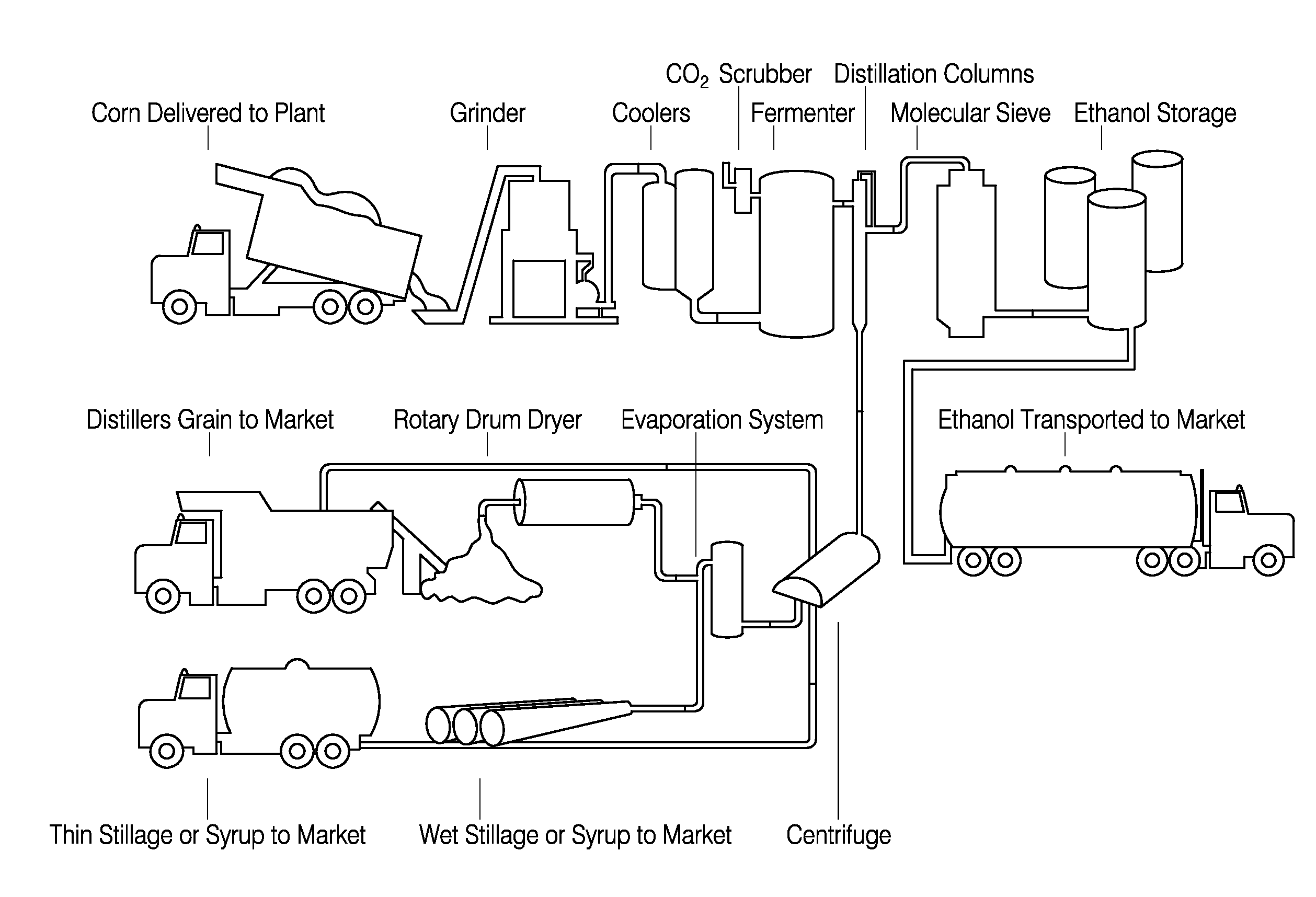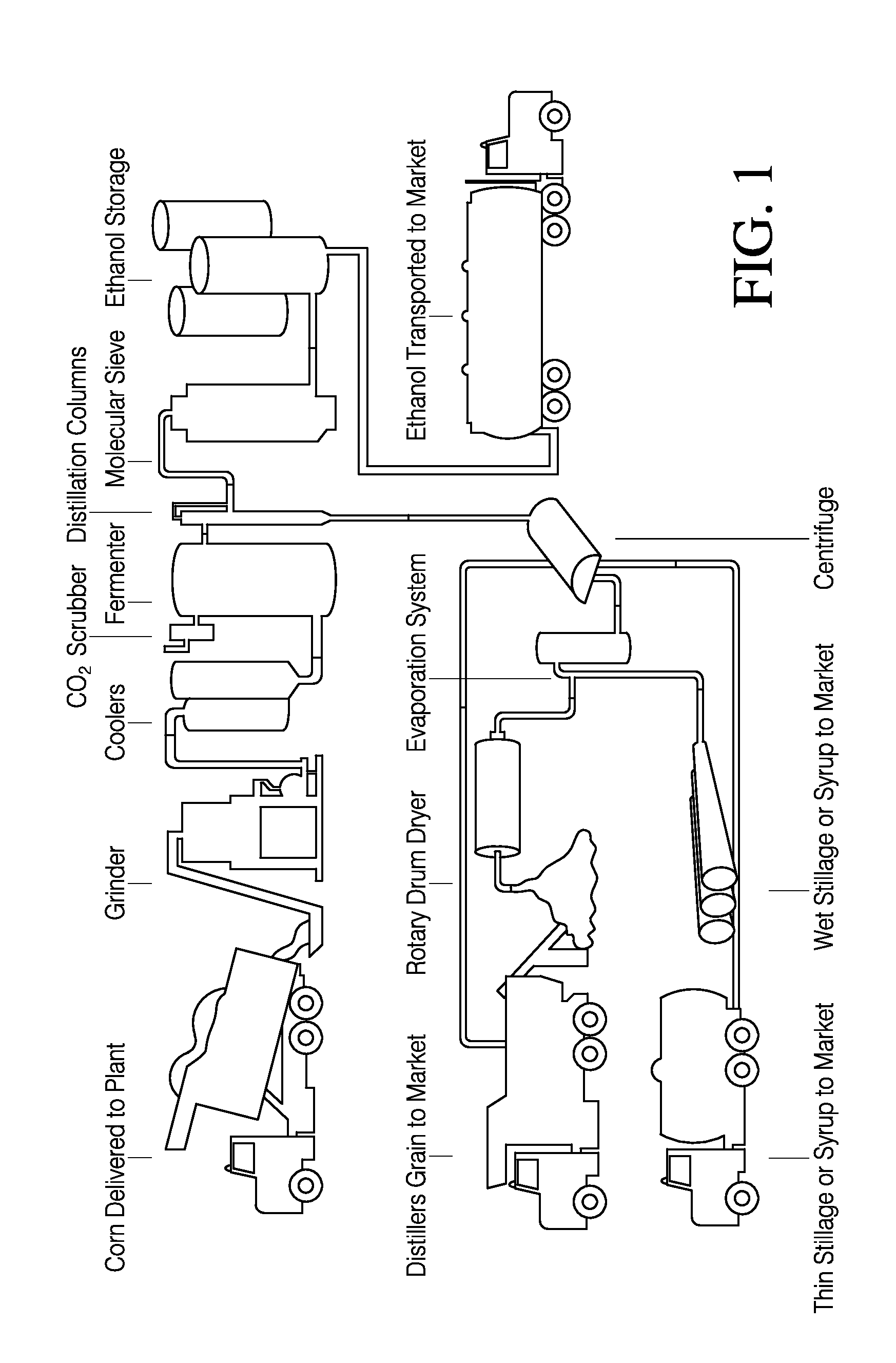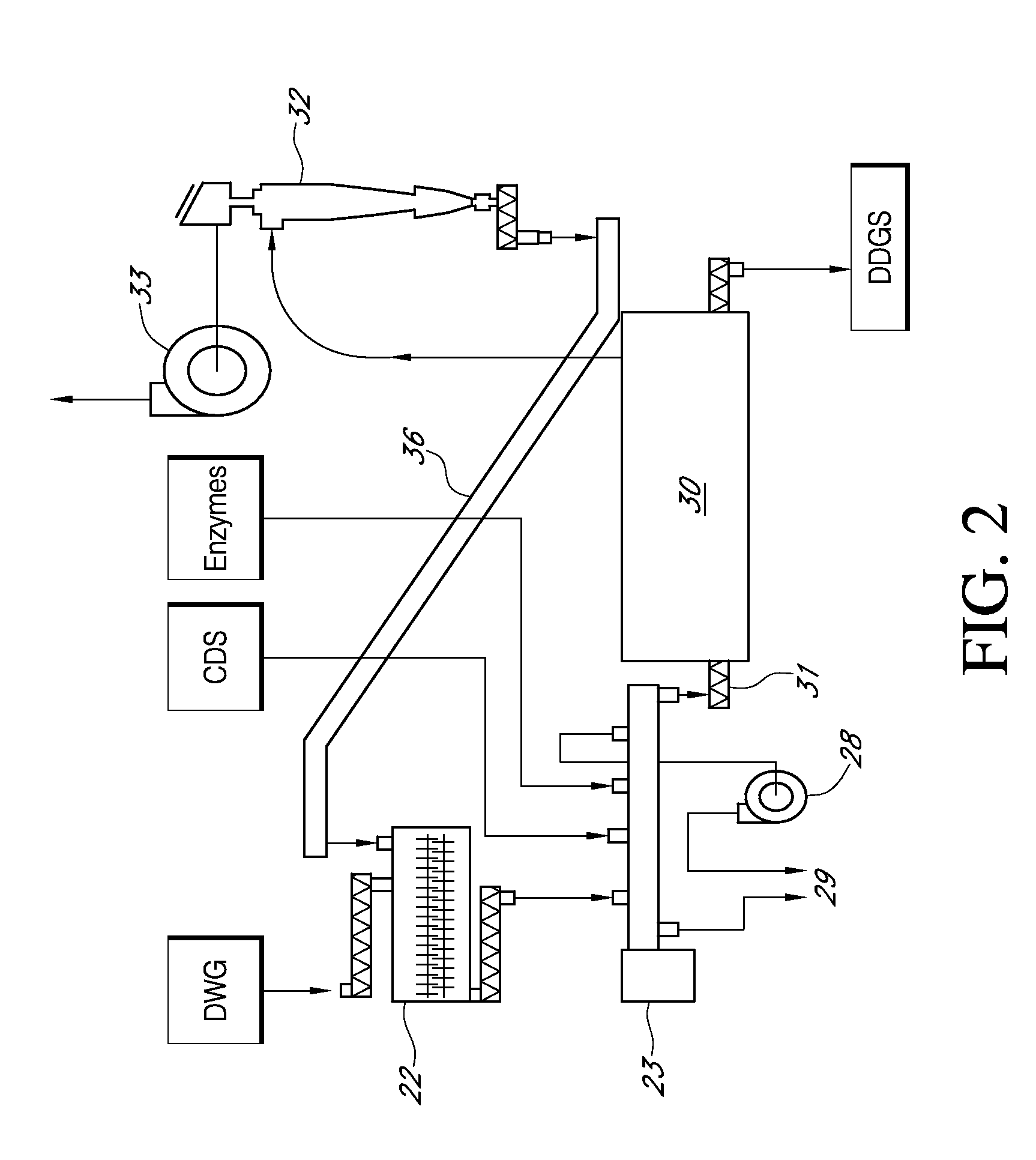Method of Producing Dried Distillers Grain with Solubles Agglomerated Particles
- Summary
- Abstract
- Description
- Claims
- Application Information
AI Technical Summary
Benefits of technology
Problems solved by technology
Method used
Image
Examples
example 1
1. Example 1
[0046]DWG was collected from the discharge of a centrifuge at Pine Lake Corn Processors, LLC, located in Steamboat Rock, Iowa. The initial moisture content of the DWG was between 65 and 68 percent by weight. Samples of the DWG were shipped to Iowa State University's Biomass Energy Conversion Center in Nevada, Iowa. The DWG was blended with DDGS from Lincolnway Energy, located in Nevada, Iowa to obtain a moisture content of 50 percent by weight.
[0047]The 50 percent moisture by weight sample was introduced into the extruder by a twin-screw feeder with an internal agitator. The material was fed into a twin screw compounding extruder, which in this case was a Leistritz ZSE-27 twin screw compounding extruder with a 15 hp motor. Table 1 provides a list of the operating parameters of the extruder. The screw profile of this extruder is shown in FIG. 8.
TABLE 1Screw ElementConfigurationBarrel ConfigurationScrew Diameter is 27 mm40:1 Barrel Diameter RatioMaximum Speed 500 RPMFuncti...
example 2
2. Example 2
[0051]As before, DWG was collected from the discharge of a centrifuge at Pine Lake Corn Processors, LLC, located in Steamboat Rock, Iowa. The initial moisture content of the DWG was between 65 and 68 percent by weight. Samples of the DWG were shipped to American Leistritz Extruder Corporation in Somerville, N.J.
[0052]As before, the DWG was introduced into the extruder by a twin screw feeder with an internal agitator. As with sample 1, the extruder was a twin screw compounding extruder, Leistritz MICRO 27 / GL 40D with a 15 hp motor. The peak extruder temperature was 60 degrees Celsius and the die opening was again set to 5 / 32 of an inch. The extruder produced pellets with a moisture content between 35 and 40 percent by weight. The pellets were placed on filter paper and allowed to cool to ambient temperature.
[0053]A Sharp microwave oven (model R-308NR, 1 cubic foot interior, 1,500 W of consumption power and 1,100 W of maximum microwave power) was used for the drying proces...
example 3
3. Example 3
[0054]For a control group and baseline for pellet moisture, pellets made as described in Example 2 were allowed to air dry in ambient conditions. After 30 days of storage in which the ambient air temperature was approximately 77 degrees Fahrenheit, the resulting moisture of the pellets was 22.75% by weight.
PUM
 Login to View More
Login to View More Abstract
Description
Claims
Application Information
 Login to View More
Login to View More - R&D
- Intellectual Property
- Life Sciences
- Materials
- Tech Scout
- Unparalleled Data Quality
- Higher Quality Content
- 60% Fewer Hallucinations
Browse by: Latest US Patents, China's latest patents, Technical Efficacy Thesaurus, Application Domain, Technology Topic, Popular Technical Reports.
© 2025 PatSnap. All rights reserved.Legal|Privacy policy|Modern Slavery Act Transparency Statement|Sitemap|About US| Contact US: help@patsnap.com



